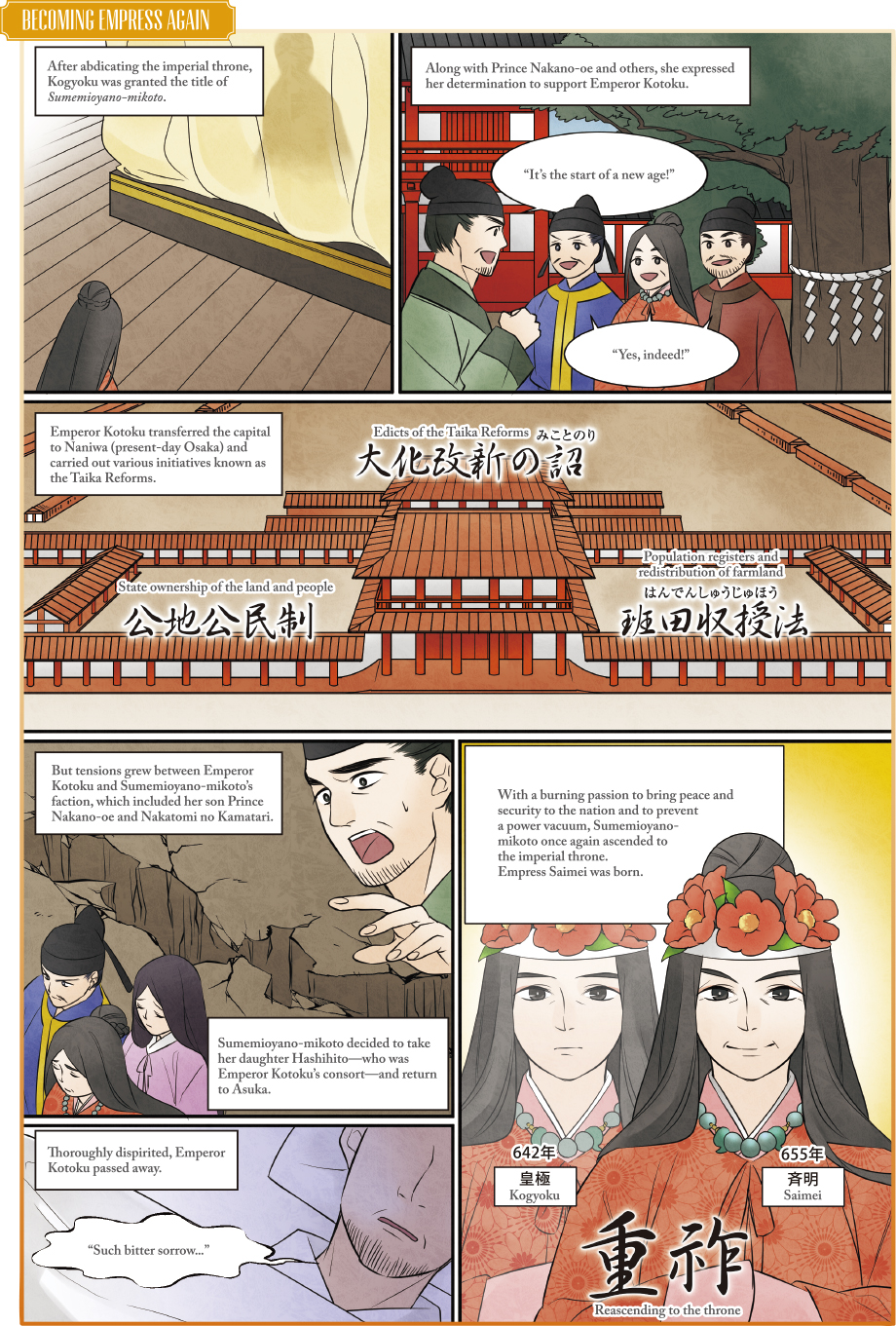Reascending to the throne— a drastic measure to lead the nation
The end of clan rule and the birth of a nation
The Taika Reform edicts issued at the start of 646 provided guidelines for a new political structure modeled after the legal system of China’s Tang dynasty. Article 1 abolished private ownership of land and people by the imperial family and powerful clans. They were instead to be owned by the state (in effect, the emperor), with clans being compensated with wages. This system allowed the emperor to diminish clans’ power and tout his absolute authority over the nation. The four articles of the Taika Reform edicts were published in the Nihon Shoki (“Chronicles of Japan”), an ancient book of Japanese history, but they were apparently embellished by the editors. Nevertheless, various research sources have confirmed that many large-scale political reforms were conducted during the reigns of Emperor Kotoku and Empress Jito. Though the details of the reforms may have been rewritten, it is safe to say that the blueprint for a centralized government was drawn by people like Emperor Kotoku, Sumemioyano-mikoto (Empress Kogyoku), and Prince Nakano-oe.
Reascending to the throne—a rare event in history
In all of recorded Japanese history, there are only two instances where a person who had abdicated the throne later went on to reascend to it. The first example is Empress Kogyoku/Saimei. The other is Empress Koken, who first ascended the throne in the middle of the 8th century, about one hundred years after Kogyoku’s reign. In order to take care of her sick mother, Empress Koken abdicated the throne in favor of Emperor Junnin and took the post of daijo-tenno (or joko). The two eventually came into conflict, and the former empress deposed Emperor Junnin and condemned him to exile. With their fearless pioneering spirits, these two women displayed the kind of self-assurance and mettle demanded of a female emperor.

